“Art is a wound turned into light.”
George Braque, French painter
One of our greatest honours is hearing stories of how textile art has helped TextileArtist community and Stitch Club members through life’s challenges. Many of you have either discovered or returned to stitching to help get you through tough times.
We’re also struck by the overwhelming support fellow stitchers offer when these stories are shared online. This has truly become a caring community in which both art and emotions can be safely shared. And it’s a terrific reminder we are not alone. Seeing and hearing about others’ journeys through loss or grief helps us all.
There are countless research articles touting the benefits of creating art to help deal with stress, anxiety, loss and grief. For example, Neuroaesthetics provides scientific evidence through brain imaging and biofeedback that the arts engage the mind and help us tap into our emotions in healthy ways.
When we create, we can express ourselves in ways that words cannot. We can attempt to make meaning while stitching through our tears, our laughter, our hopes and our pain.
That’s exactly what these five Stitch Club members have done, and we’re sharing both their art and their personal stories.
They tackle grief and fear in remarkably touching and creative ways. Each will tell you it wasn’t always easy or even enjoyable. But it was something they needed to do, and we’re all the better for it.
Jane King: A tea trolley tribute
Jane King’s mum was known for her tea trolley of goodies that she’d wheel out for family and friends. Featuring a bottomless pot of tea and lots of cakes and tray bakes, Jane’s mum used her best bone china, embroidered tray cloth, damask napkins and a silver sugar bowl Jane’s grandfather had won playing bowls during war time.
When Jane’s mum died in 2019, Jane knew she could only keep a small amount of her mum’s belongings. So, she chose the more sentimental items, including everyday linens stitched with embroidered flowers, lace or crochet trims, as well as drawn whitework details.
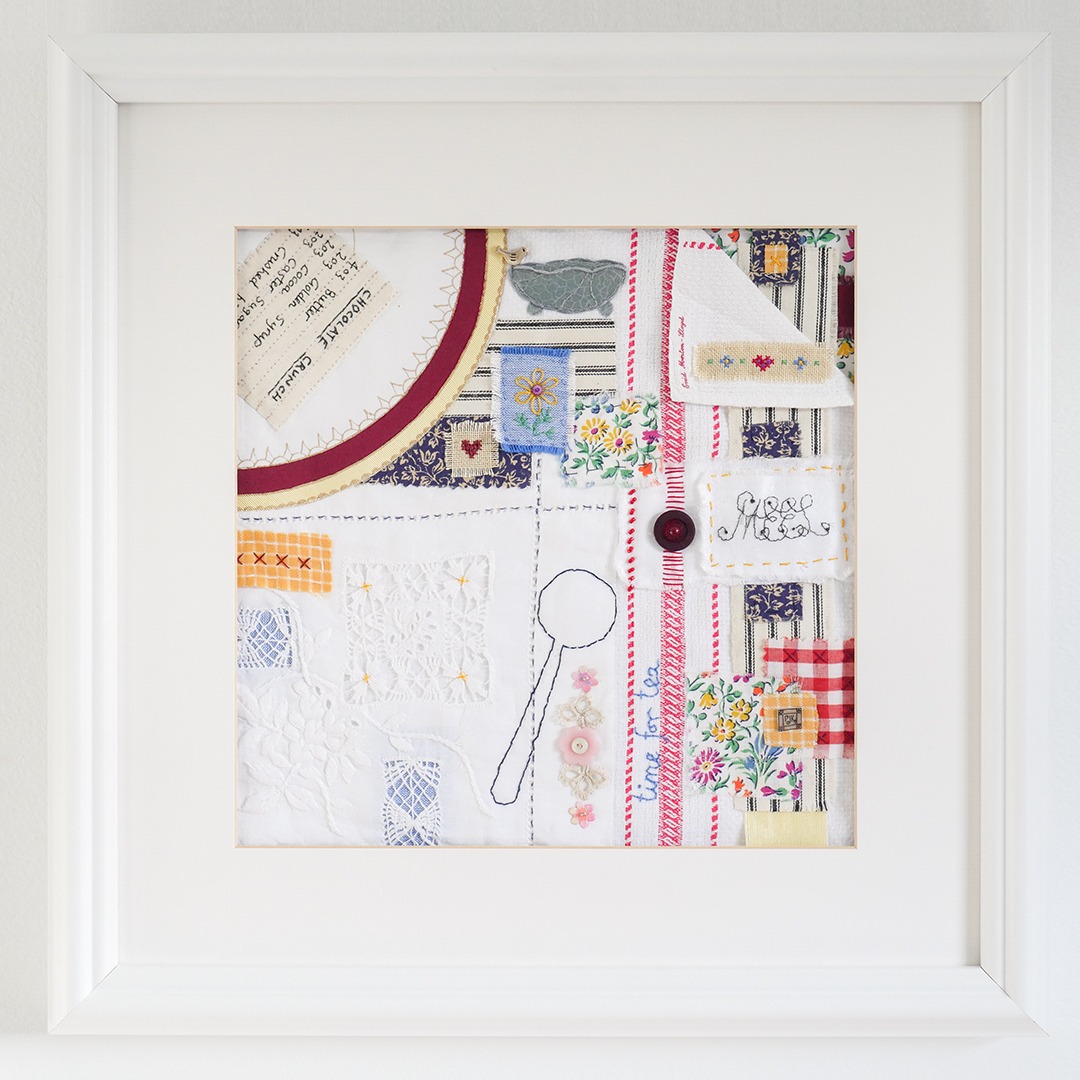
A story from home
Jane created this work in response to a Stitch Club workshop on mind mapping workshop led by Ali Ferguson.
She was challenged to create a story from home that started in the kitchen and featured meaningful materials, words and a motif. Jane incorporated treasures from her mum’s tea trolley, including her mum’s engraved napkin ring.
Jane used the workshop’s tissue paper technique to stitch her text and motifs. For example, she wrote the words ‘Time for Tea’ on the tissue paper, pinned it to the background fabric and then back stitched over her writing. She then removed the tissue paper. She used the same process for the sugar spoon.
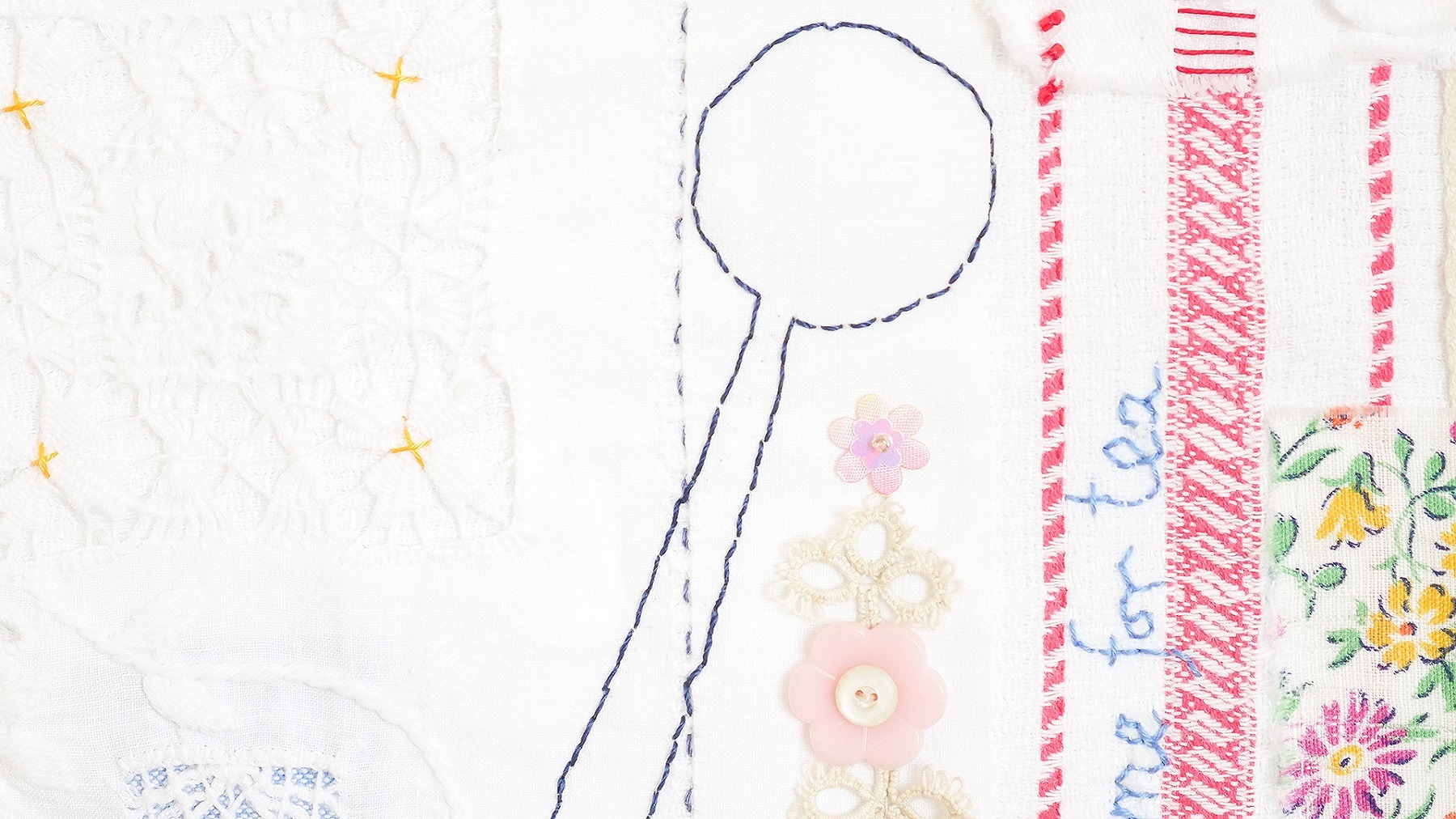
“It was a lovely experience to find a home for some of those fabrics and use them to capture happy memories.”
Jane King, Stitch Club member
Memories in stitch
Jane King: ‘It was helpful to make something pretty and cheerful that remembered the good times rather than the sad times when my mum’s health was failing.
‘The china plate in the corner especially brings back so many happy memories. Mum would make a Victoria Sandwich cake with half jam and half lemon curd inside, and a sprinkle of caster sugar. It was a real treat to get the slice that had both!
‘It’s a straightforward technique, and I think adding handwriting to a piece adds a very personal touch.
‘I most enjoy creating personal pieces inspired by the textiles I’ve inherited or using them in pieces based on my local patch walks, which have been so important during lockdowns. I have just finished a cloth concertina book titled A Walk Around the Block.’
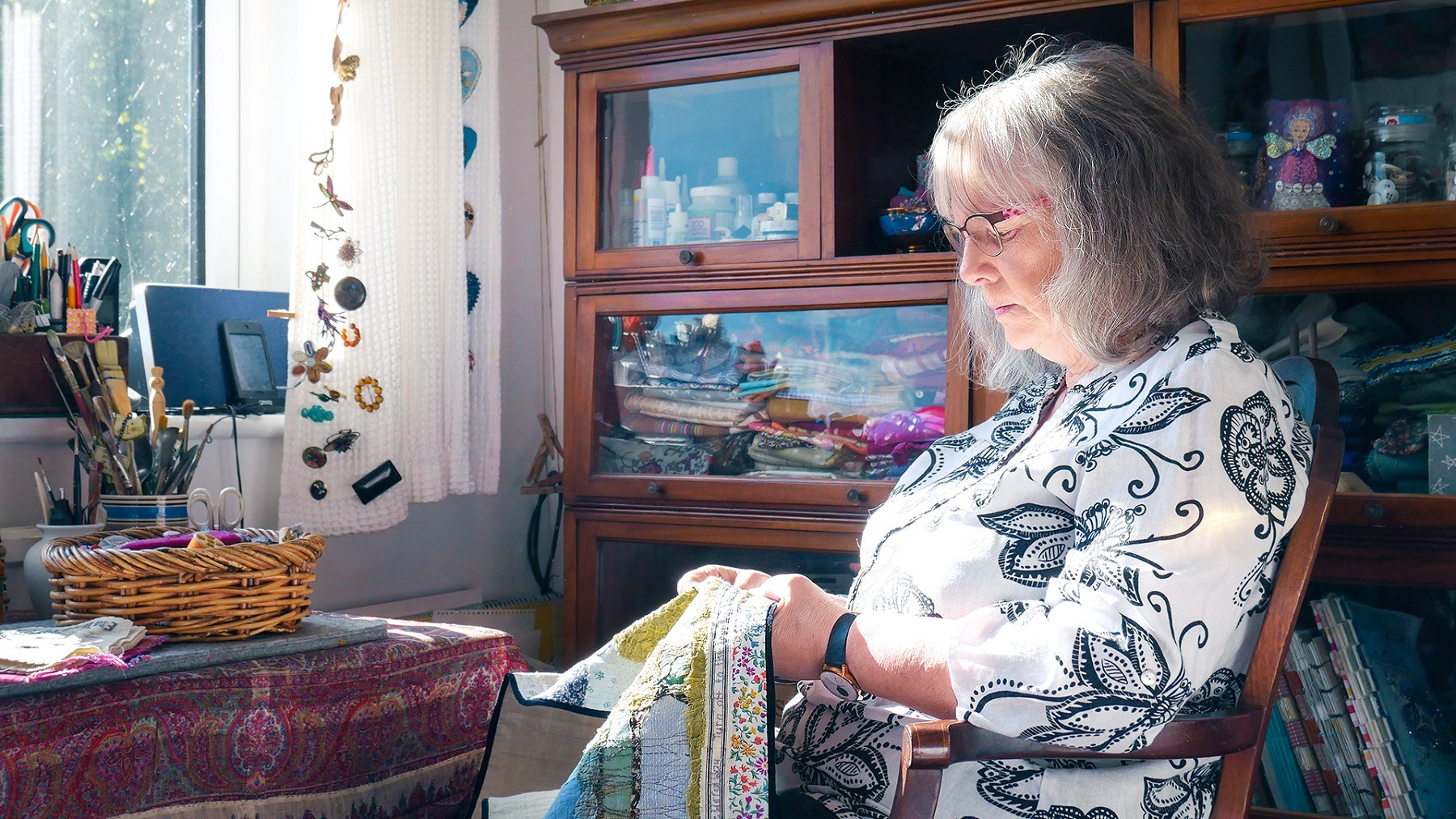
Jane lives in Willaston, Cheshire, UK, and since retiring 10 years ago, she has concentrated on textile art. She joined The Embroiderer’s Guild local branch and was also invited to join Context, a local textile group.
Sandra Rose: My grandfather, the tailor
Sandra Rose’s love for textiles came from her grandfather (‘Dadcu’ in Welsh) who was the village tailor in Whitland, West Wales. His workroom in the front of the house was a social hub on ‘Mart Day’ when farmers would come for either a fitting or a chat. He also helped with funeral dressing, messaging a firm in Cardiff for fabric to be delivered the next day. It was not unusual for him to stitch day and night to complete funeral outfits.
She spent hours laying her dolls on the fabric and drawing around their shapes before carefully cutting them out. Sandra explains that she eagerly sewed the pieces together, but they never fit. That was her first lesson on seam allowances, and from then on, textiles have been a long-standing passion in her life.
“As a young child, my grandfather saved his leftover fabric scraps for me in a special box – they were my treasures.”
Sandra Rose, Stitch Club member
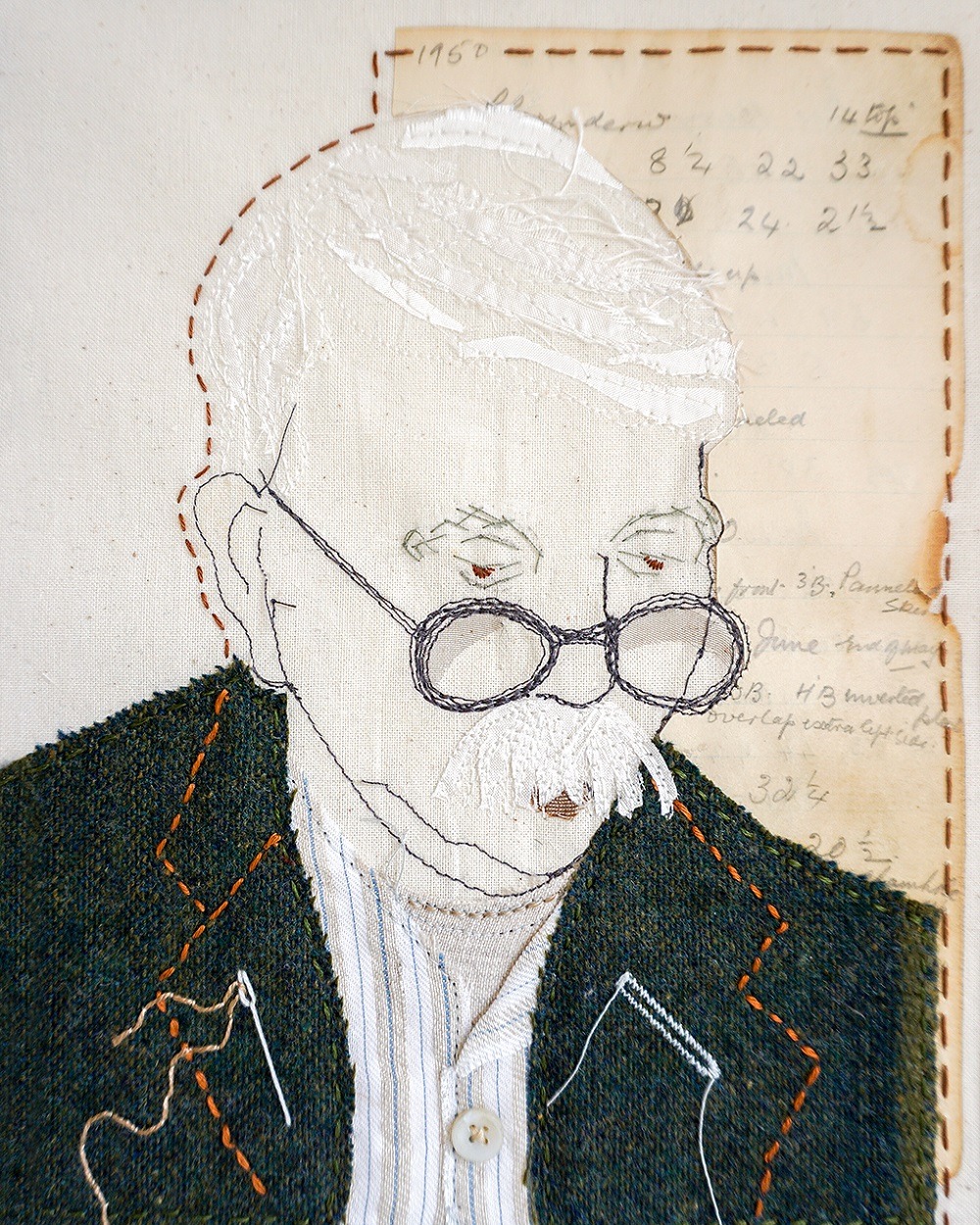
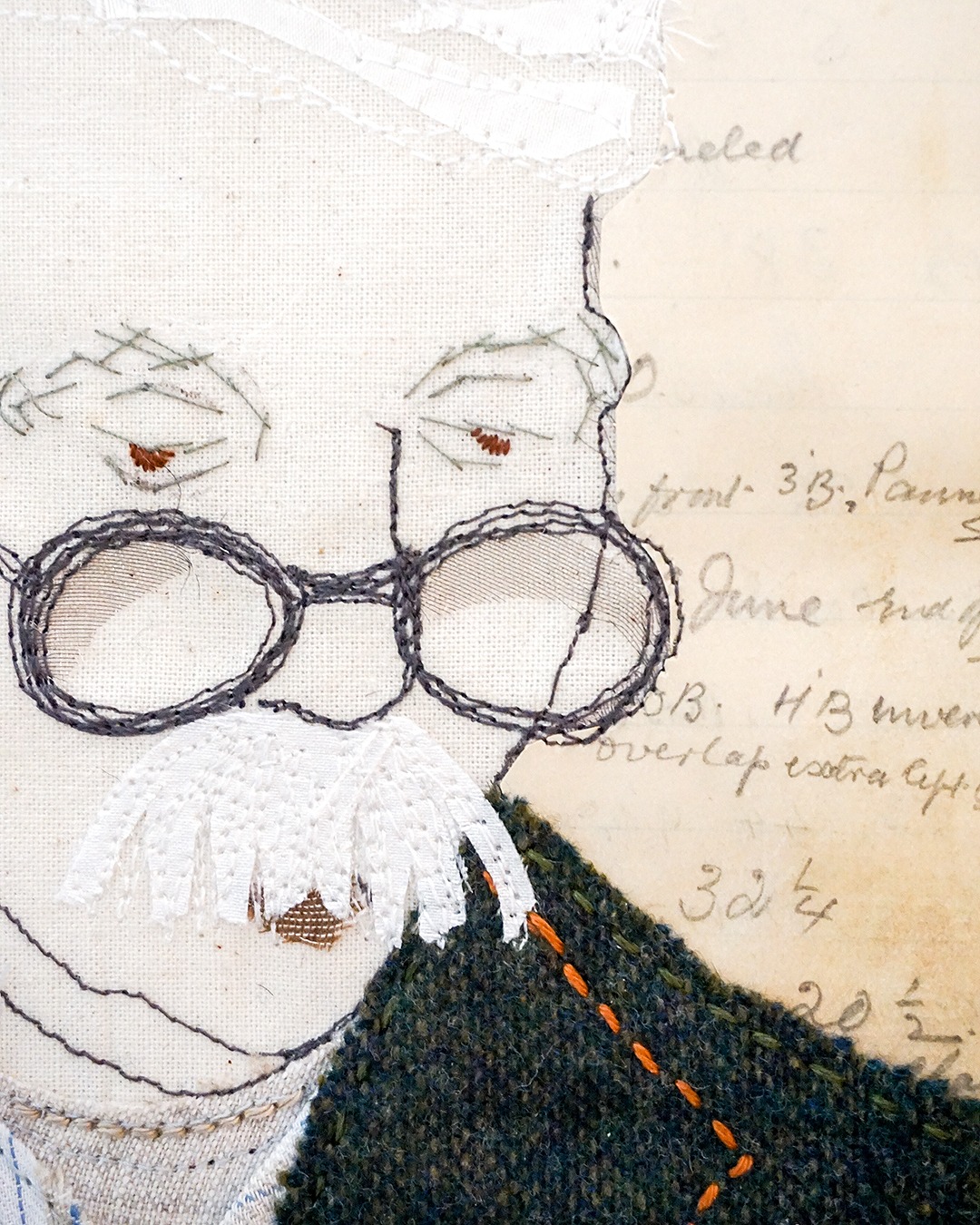
Satin offcuts & vintage wool
Sandra had always avoided stitching faces in her work, but she decided to take on the portrait challenge presented in Ailish Henderson’s workshop for Stitch Club. She chose an evocative picture of her grandfather in his workroom which brought back childhood memories.
She used white satin offcuts to capture the shine of her grandfather’s snow-white hair and moustache. Vintage wool was used for the jacket and a ticking fabric for the shirt.
Sandra loves the broad range of skills, techniques and finishes that working with textiles offers.
Sandra Rose: ‘Trying to capture his essence was the most difficult part. I tried to incorporate small touches that I could remember, such as the needles and threads in his lapels and the glasses on the tip of his nose.
‘I included an original page dated 1950 from his measurements book and worked a running stitch to bring the piece together and add some originality.
‘I have experimented with most processes, from traditional techniques such as hardanger and cross stitch to running wild with free machining.
‘Now I pursue a diverse mix of layering, dyeing, painting, printing, distorting and free machining – textiles feed my soul.’
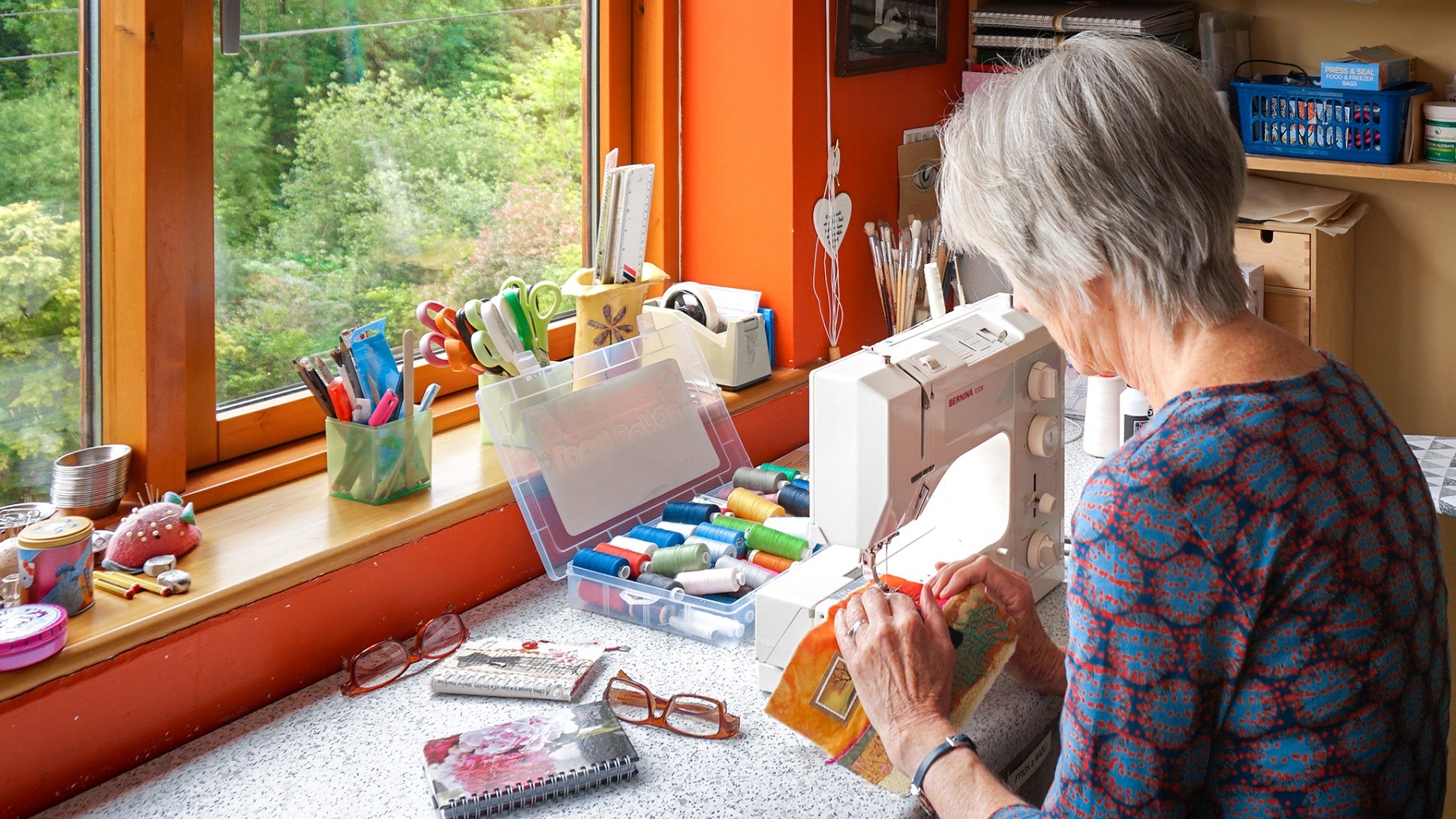
Sandra lives in a small village on the outskirts of Cardiff, Wales. She had always intended to stitch memories of her grandfather, and this particular Stitch Club challenge inspired her to create a textile book that she can now cherish and share with family and friends.
Ali Lester: A walk with dad
When Ali Lester lost her father, it hit her hard. He was the rock of the family and he loved unconditionally. He had wanted to pursue art as a career, but he was brought up to believe he had to get a ‘good job’ to support his family.
Ali Lester: ‘Fortunately, he spent his last 18 years of retirement developing his passions for art and music. When we went to galleries, he would point things out that made paintings come alive. And he’d sometimes stand in front of a single artwork for 30 minutes or more just soaking it in.’
“Visiting galleries was almost a spiritual experience for him, and now it’s the same for me as I sew a bit of my soul into my work.”
Ali Lester, Stitch Club member
Stitching a personal map
This piece was inspired by Valerie Goodwin’s Stitch Club workshop, in which Ali was challenged to illustrate a special place with stitch and colour.
Ali decided to depict a walk through the woods with her father that was both realistic and symbolic. She layered painted fabrics with grey and peach transparent nylon to create the dark and light areas of the map. She then added round cuts of fabric attached with star stitch to represent the trees.
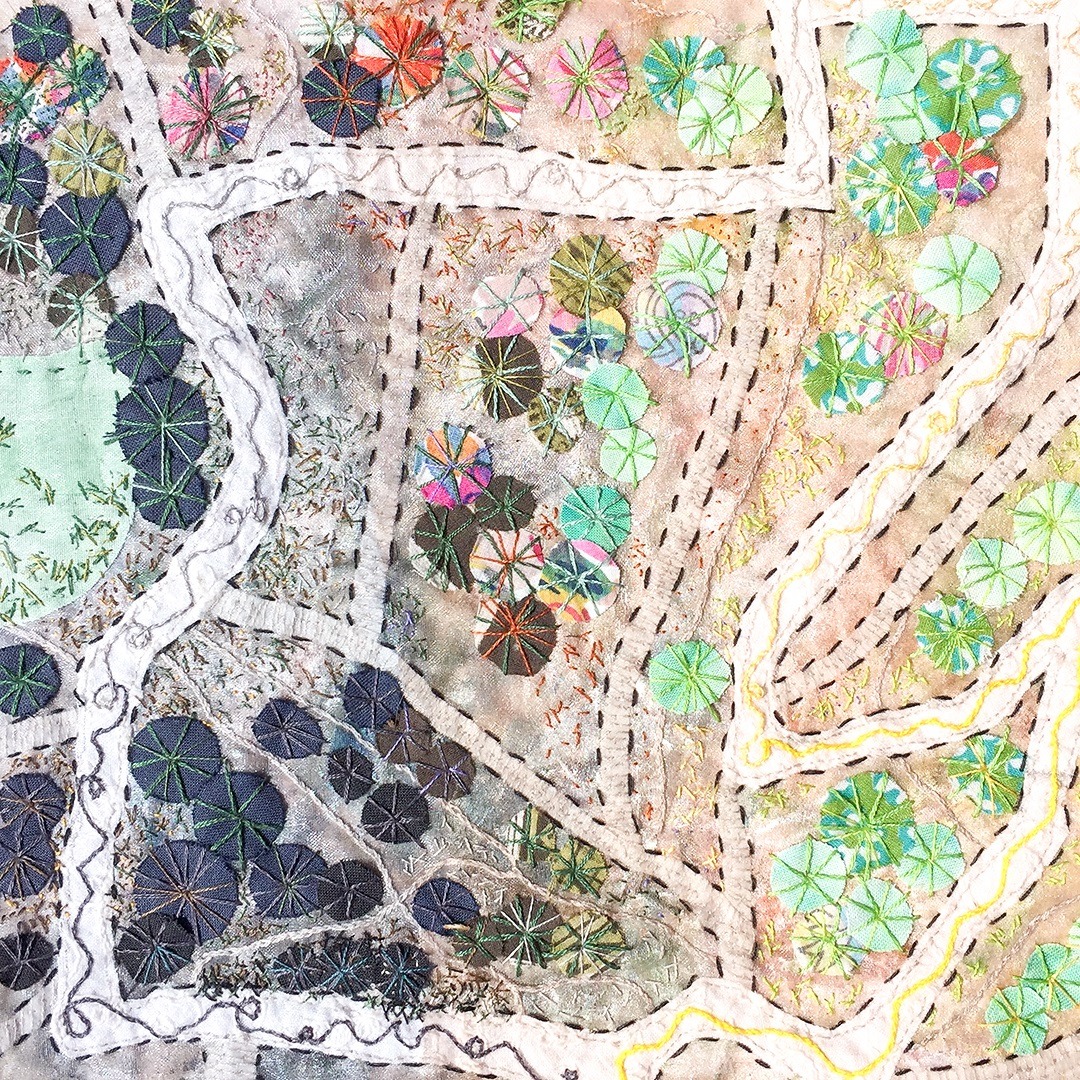
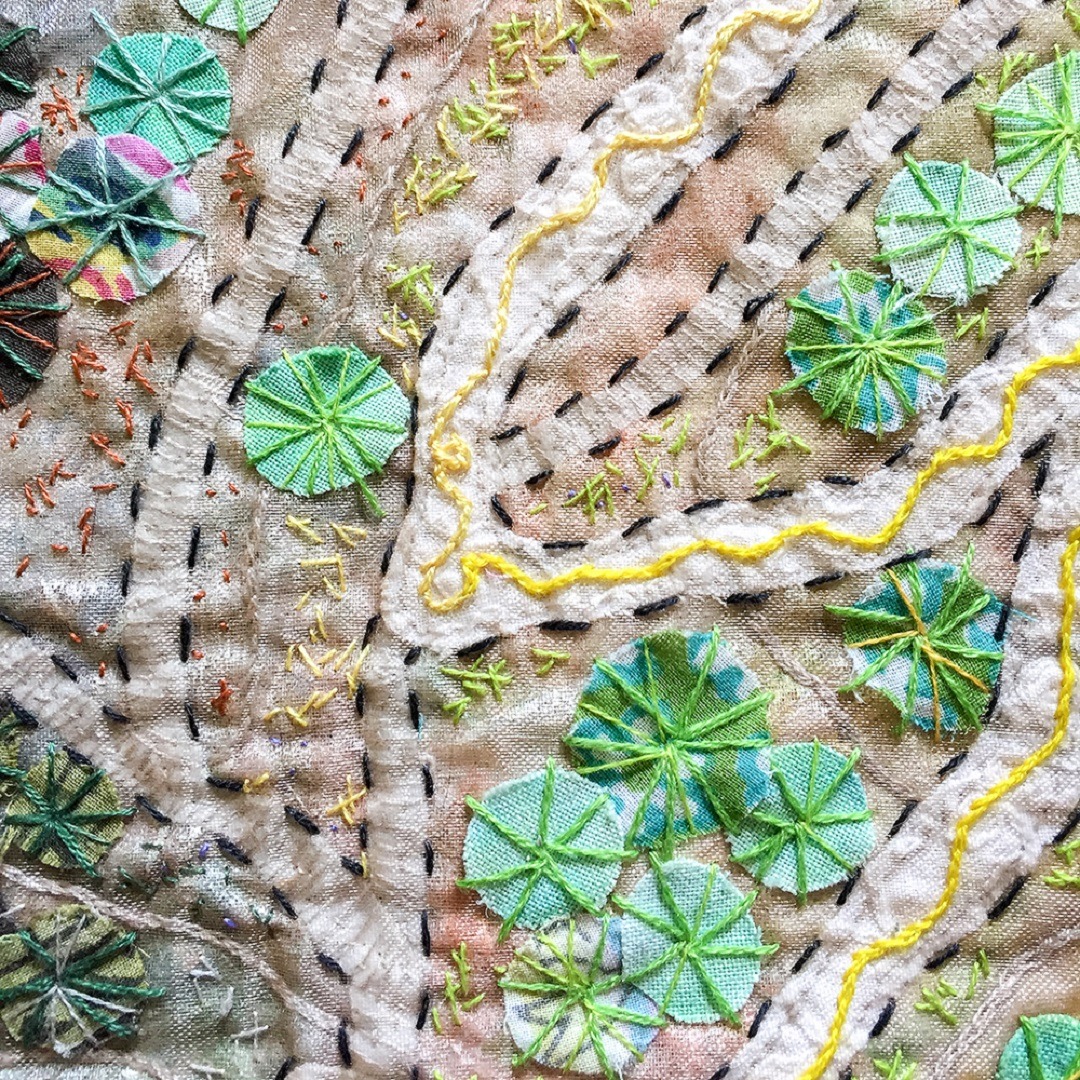
Therapeutic stitching
Ali Lester: ‘I finished the piece with a split stitch line that starts in grey and finishes in bright yellow to depict my emotional journey. The line starts with many twists and loops that eventually lessen but are never fully straight.
‘For me, that represents how grief never ends, but you learn to smile through it. After all, we only feel deep sorrow because we have known great love.
‘There were moments when I struggled and had to put the work aside for a few days, but overall, I found creating this piece to be very therapeutic. Slow stitching, like walking, is meditative and I was able to make a symbolic journey through my grief by travelling from dark into light.’
Ali admits creating this work brought forth many mixed emotions. Some were painful, while others were bittersweet memories of the good times.
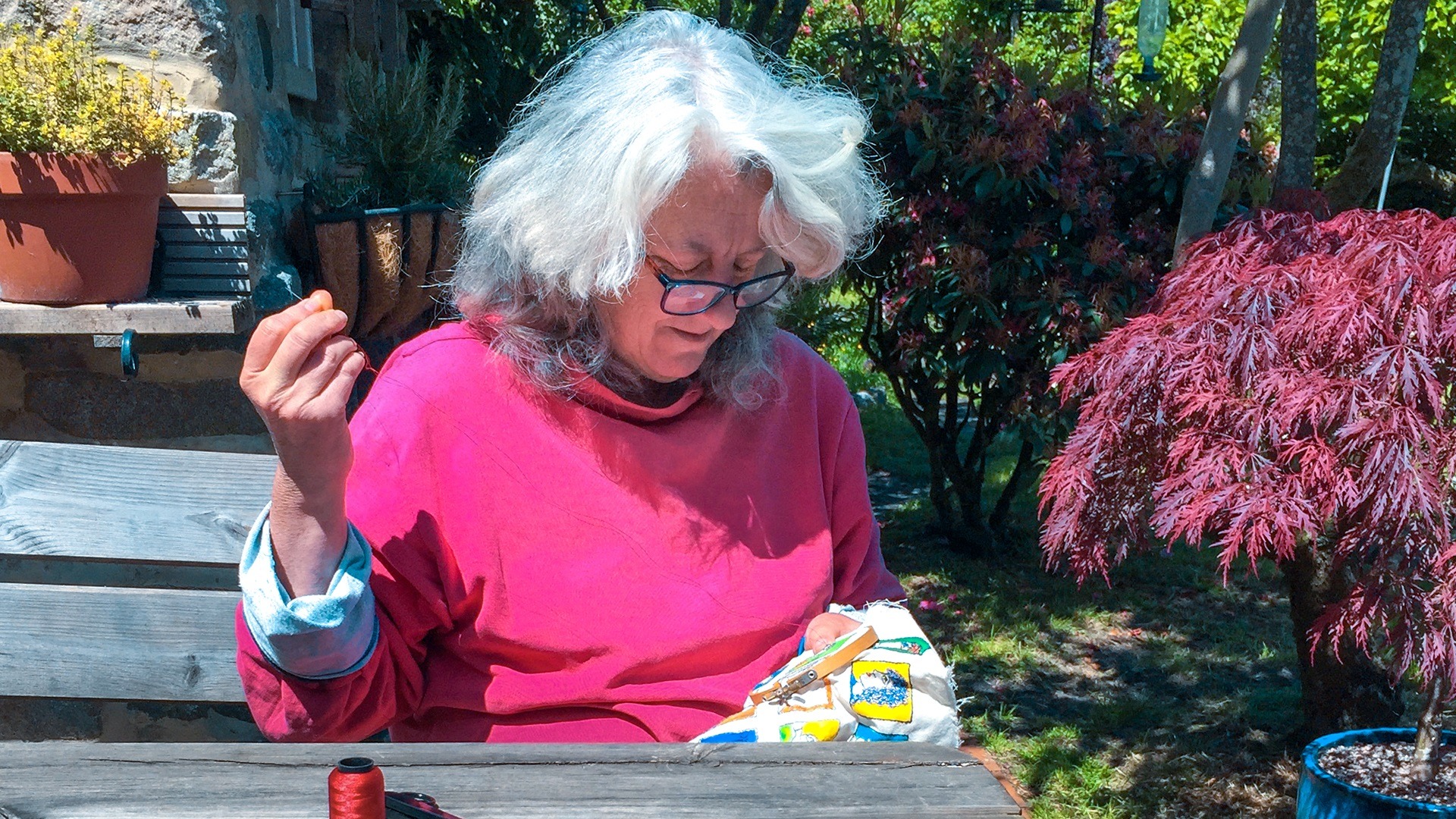
Ali lives in her childhood village in the Surrey Hills, UK. She rediscovered textile art when she completed a teaching degree in Art and Design from Coleg Normal which is part of Bangor University in North Wales.
Elaine Skidmore: Best friends forever
Elaine Skidmore and her friend, Lesley, were very close friends. They met in 1984, and their friendship blossomed through trips to the theatre and visiting National Trust properties. Sadly, Lesley passed away from cancer in 2018. Elaine was devastated: ‘Lesley was liked by everyone who met her and was kind and thoughtful to everyone she met. Lesley loved her family and was a loyal friend.’
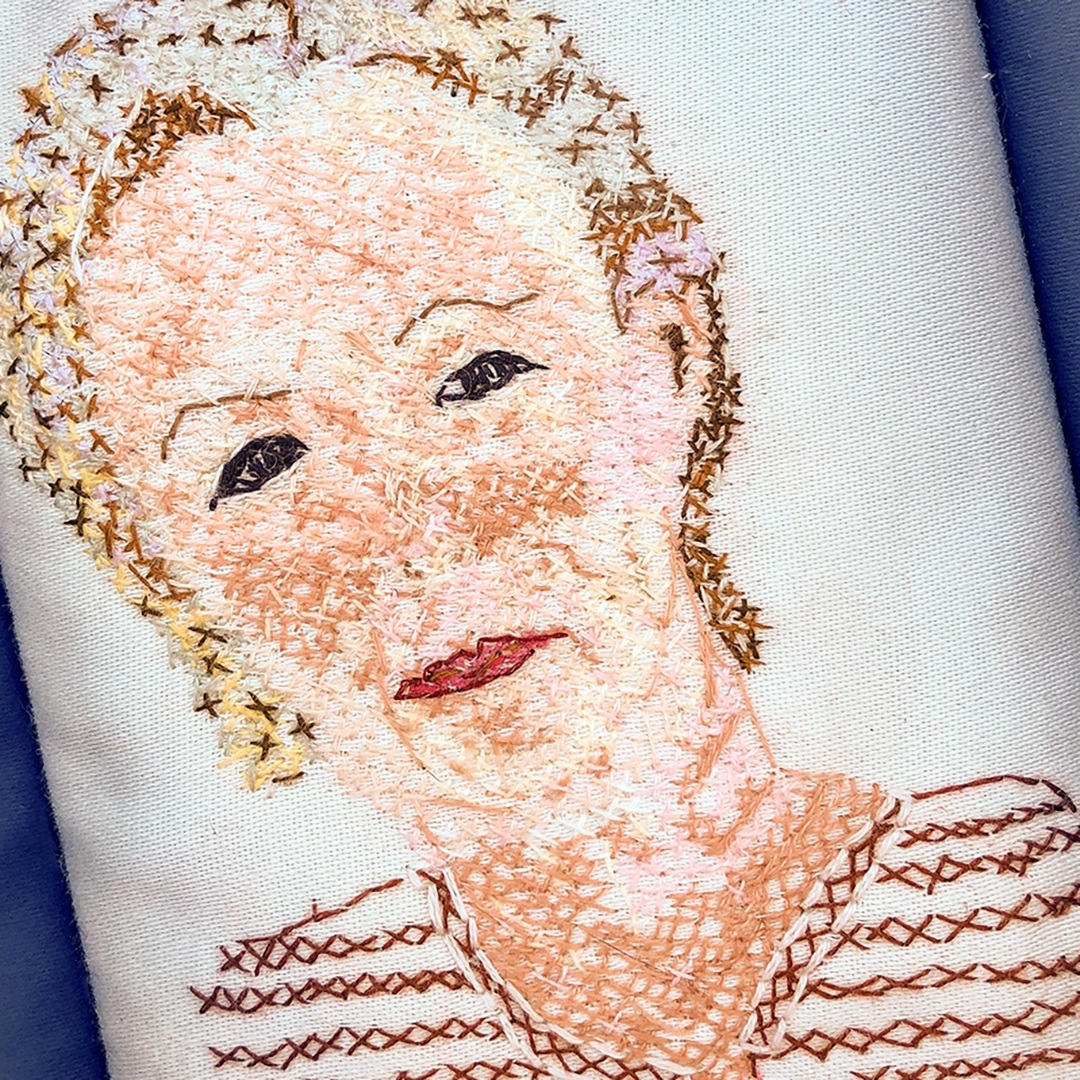
Remembrance through stitch
Elaine took part in a Stitch Club workshop with Sharon Peoples, focusing on cross-stitching portraits, and decided to stitch a portrait of Lesley from a photo she had. She traced Lesley’s image on tissue paper and then pinned it to linen.
After stitching the outline with cross stitches, she tore the tissue away to then fill in the image with more cross stitch, adding stitches that resembled the pattern in Lesley’s cardigan.
Perhaps most remarkable is the fact that Elaine’s work is about the size of a hand. Students were encouraged to create mini portraits that could fit into small boxes, tins or other containers. Elaine didn’t think about a container at first, as she wasn’t confident she’d complete the portrait in the first place. Ultimately, she was pleased with her end result, so she found a suitable container and added quilting wadding to the back before placing it inside.
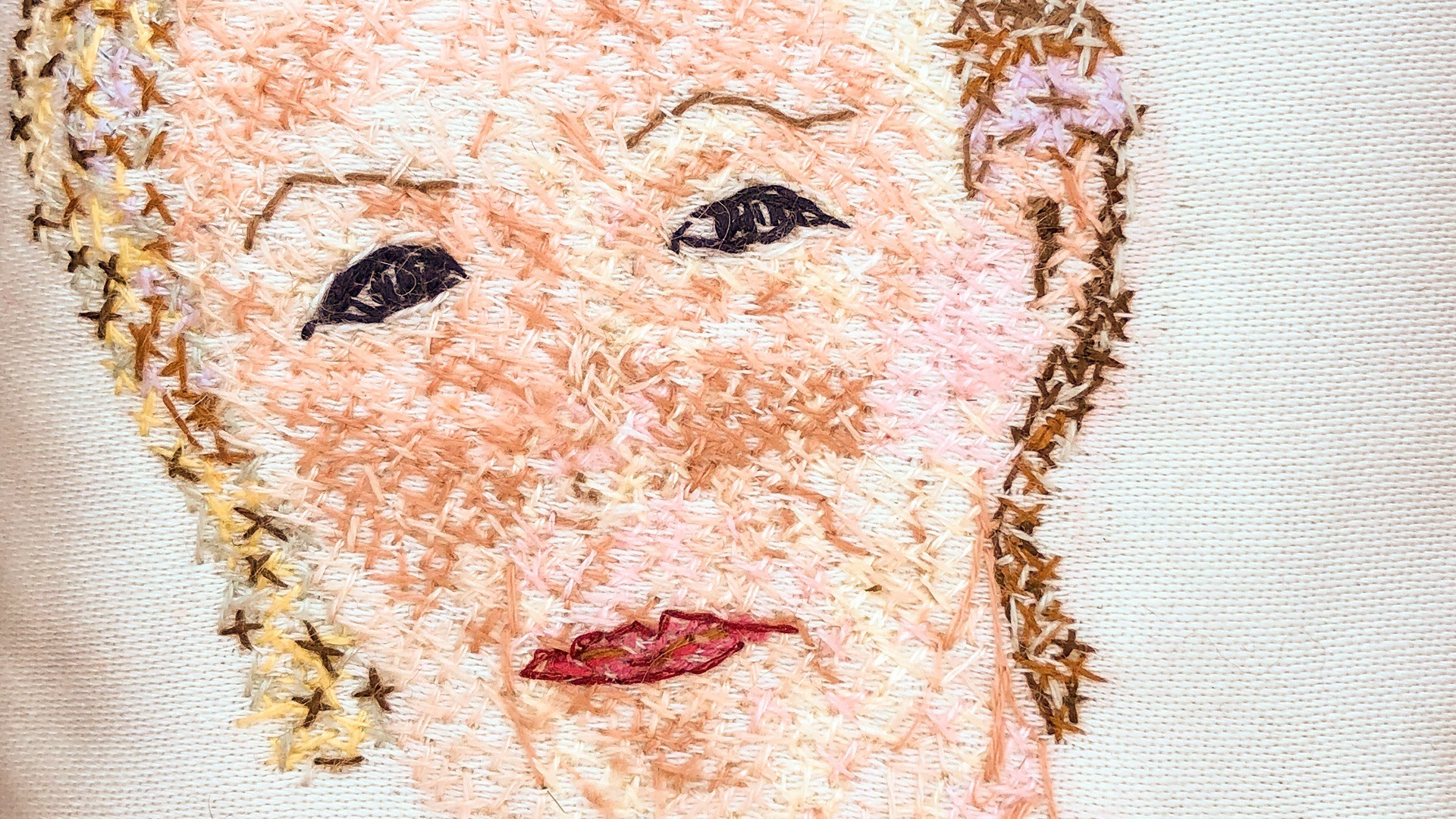
Exploring a new technique
Elaine Skidmore: ‘I worked from the top down, ending with the cardigan, overlapping light and dark threads to achieve the shading.
‘I had never stitched a portrait before, but I do paint, so I suspect that helped with the shading. I did struggle with the nose area, but overall, I think it came together quite well. I also think the fact I knew Lesley really well helped me succeed.
‘I found this process to be very therapeutic, and it just seemed to come together very easily. I felt as though something was guiding me, and I was pleased with the result.’
“Having not done anything like this before, I nearly didn’t attempt to make this portrait. Now I’m so glad I did.”
Elaine Skidmore, Stitch Club member
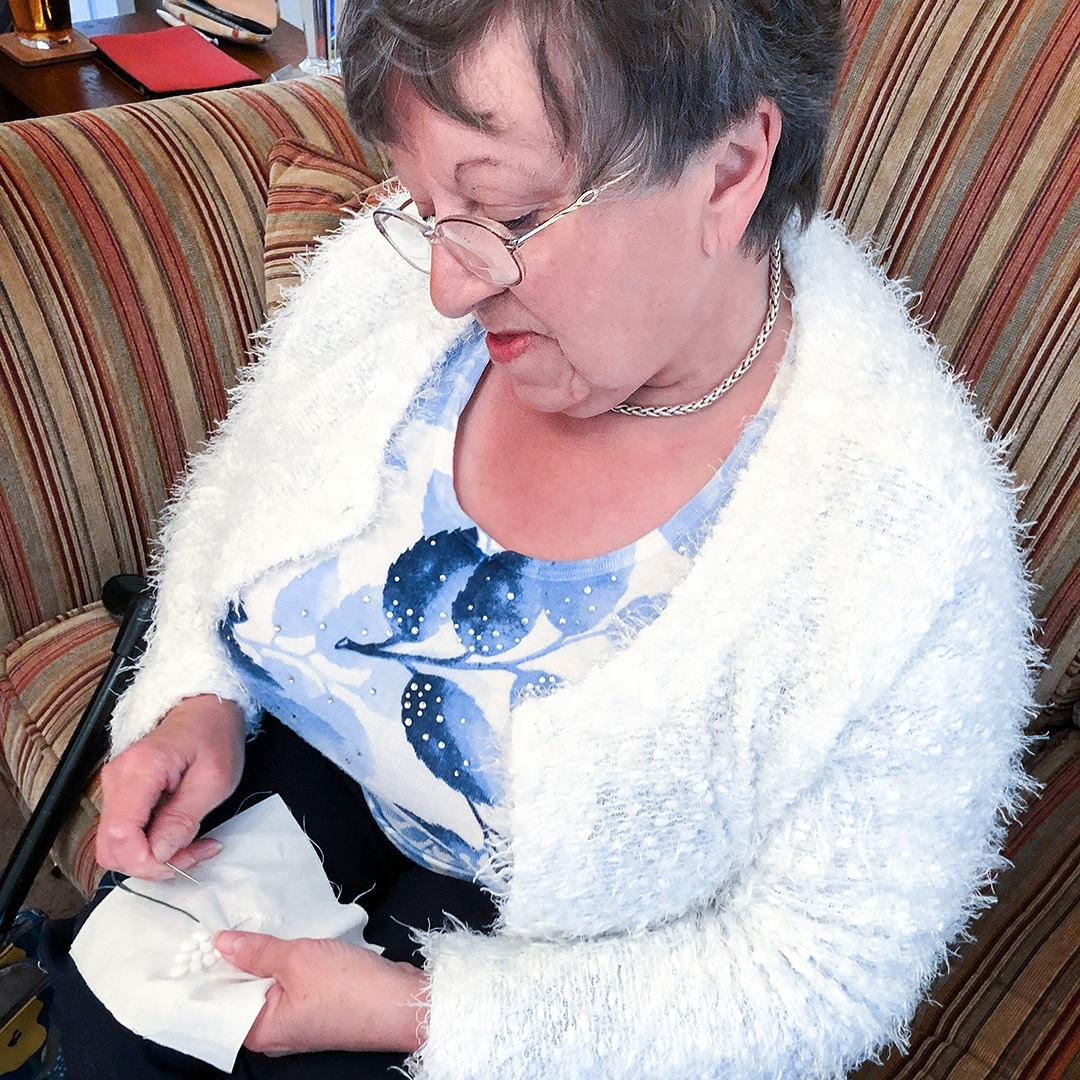
Elaine lives in Kingswinford in the West Midlands, UK, and is self-taught. She joined a local embroidery group not too long ago and has since loved making art pictures in stitch and felt. She also enjoys free-motion embroidery and appliqué.
Moyra Costello: Art of war
When Moyra Costello posted this work in the Stitch Club member area, she apologised in advance. The piece was her response to Gwen Hedley’s Blurred Boundaries workshop in which Moyra expressed the dark feelings she had in the wake of Russia’s war with Ukraine.
“The response I got from my peers was supportive – they understood my response and empathised, and this made me feel normal, rather than overly sensitive.”
Moyra Costello, Stitch Club member
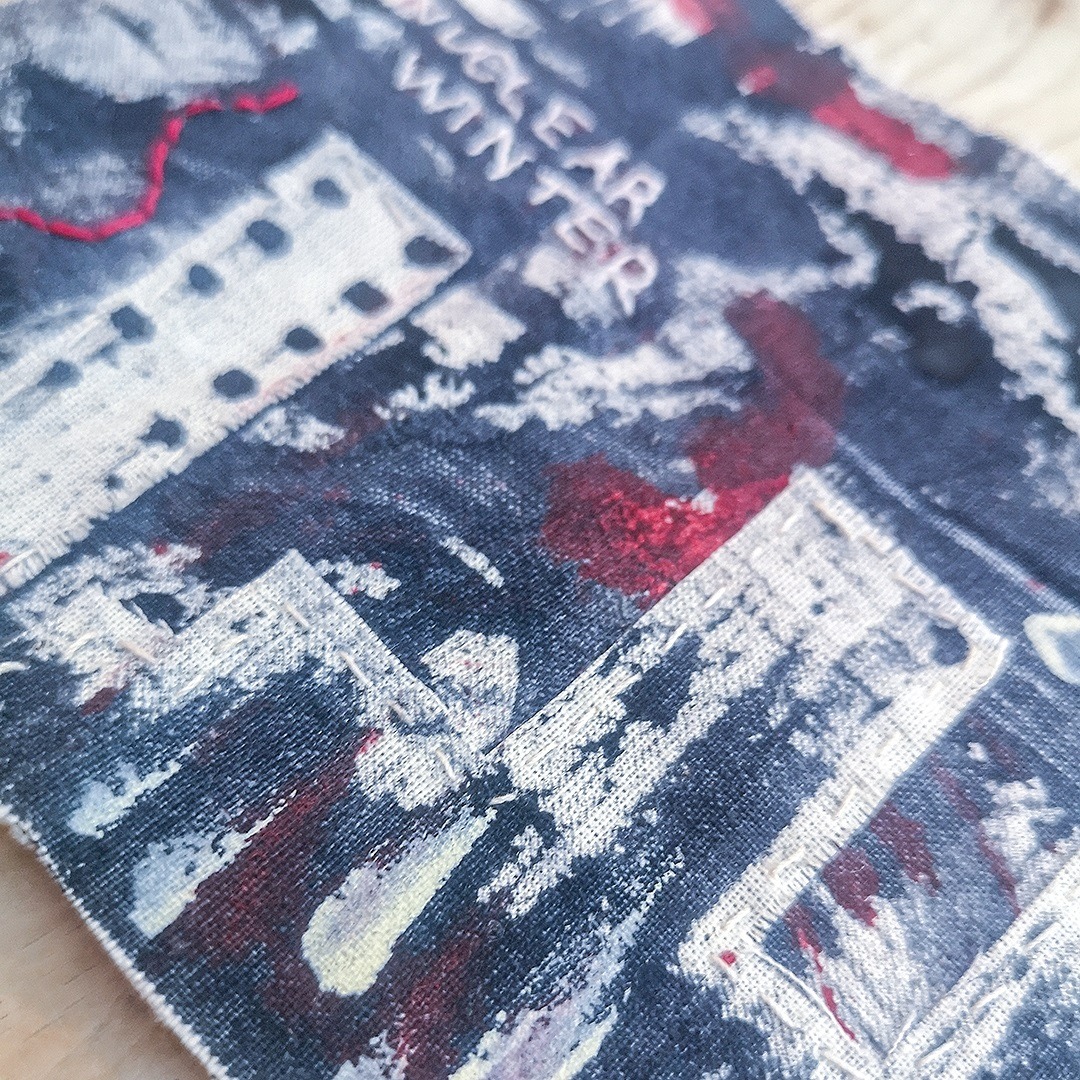
Confronting fears
When Moyra and her brother read Robert Swindells’ Brother in the Land when they were much younger, and the two were forever changed. The book follows the adventures of a teenage boy as he struggles to survive in the north of England after a nuclear war has devastated the country.
Surrounded at the time by real-world stories about the Cold War, Moyra and her brother were convinced a nuclear war was imminent – that fear became a lifelong deep-rooted horror.
Moyra Costello: ‘On the one hand, I am an expressive person, and getting my feelings out in a safe way is very helpful. On the other hand, I was giving shape to my underlying fears as I imagined the ultimate devastation and death of nature that comes with a nuclear holocaust. It’s not a fun topic.’
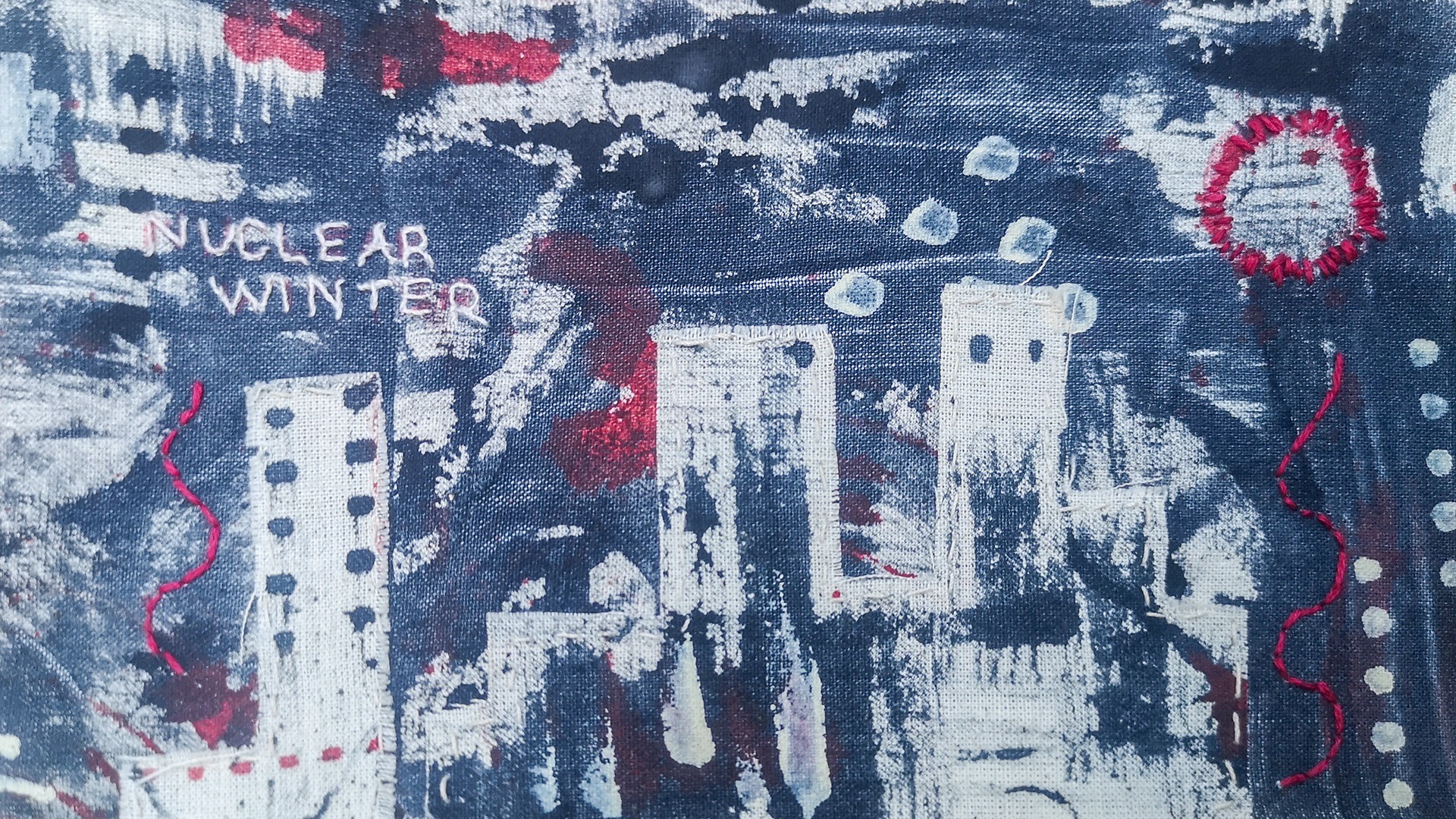
The workshop focused on mark making with acrylic paint on calico fabric and then stitching on top.
Moyra had long wanted to create a piece of art with paint and stitch. After painting the fabric with various tools and household items, she cut it up into different shapes and then sorted them to represent different aspects of the scene.
Rectangular blocks reminded her of the Twin Towers hit on 9/11, and the circular shapes evoked clouds of smoke. She embellished the work with thread and additional appliqué.
For this project, students were asked to choose two contrasting colours of paint to apply to a light-coloured background. Moyra chose the colours scarlet and Payne’s Grey, a combination that related to her theme.
Moyra Costello: ‘As I was working, suddenly all I could see was smoke, bombs and blood.
‘I have always gravitated toward more creative ways of expression. I hate to be given a pattern – I prefer to create something from raw materials.’
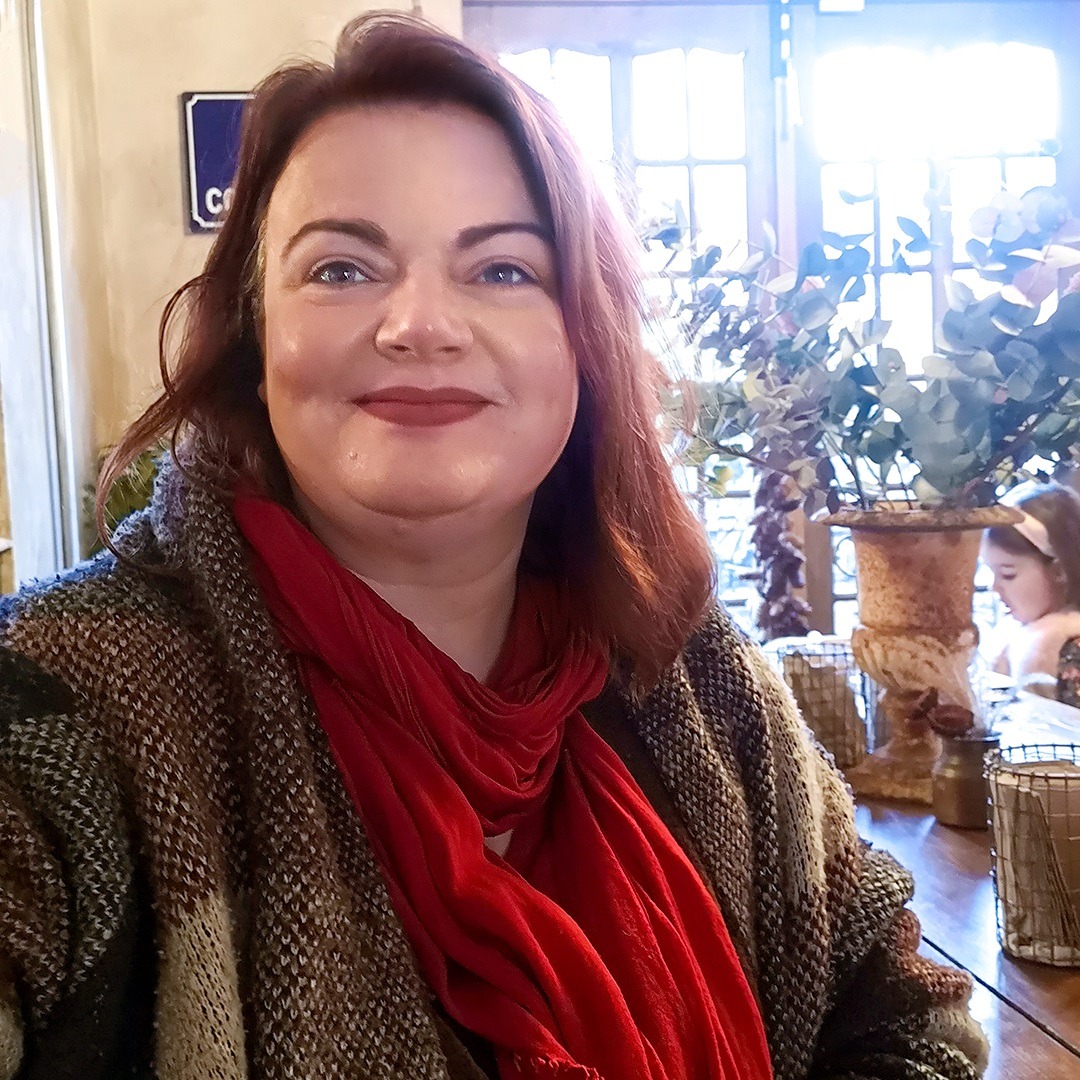
Moyra Costello lives in London, UK, and has worked on craft projects for many years, starting with painting and home décor. Winning a Cadbury art prize for her painting The Firebird has had a lasting effect on her creativity.
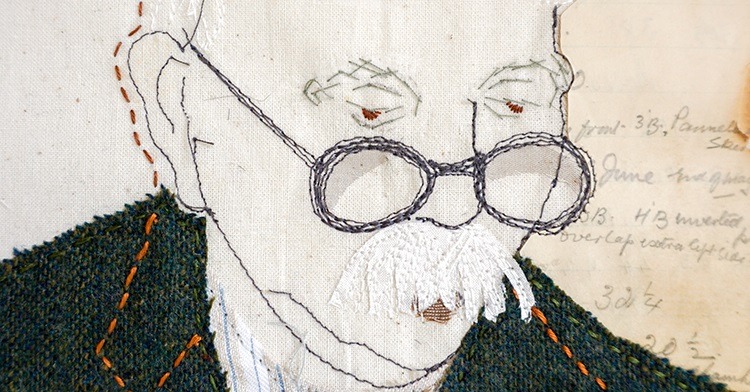

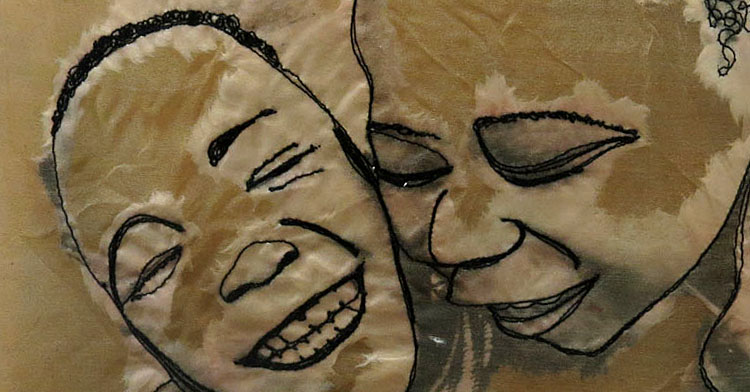
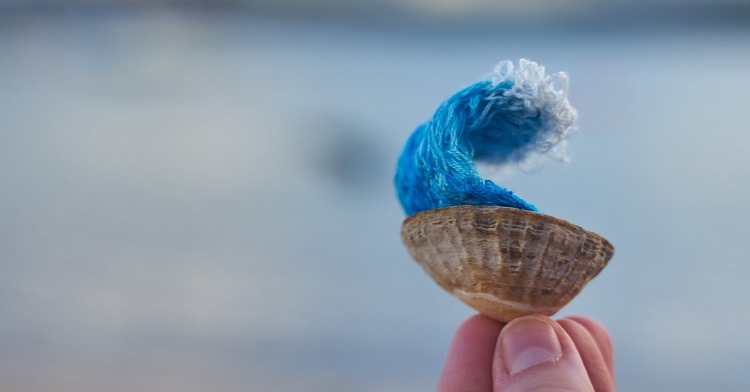
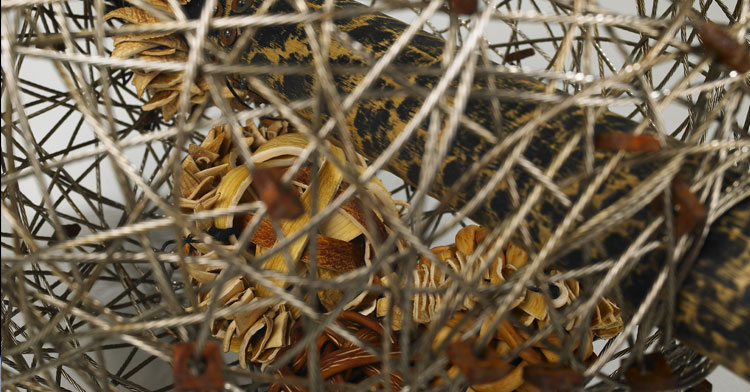
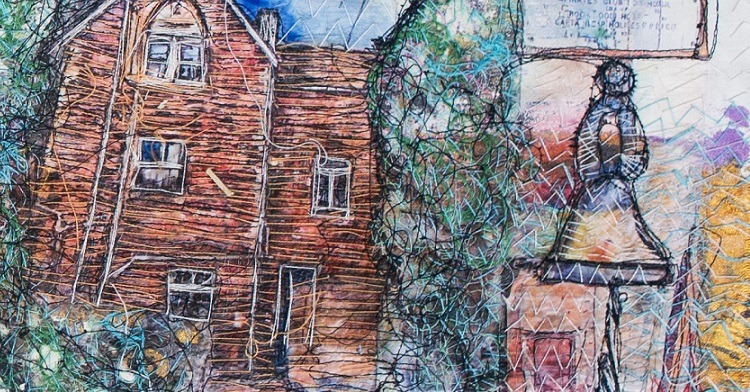
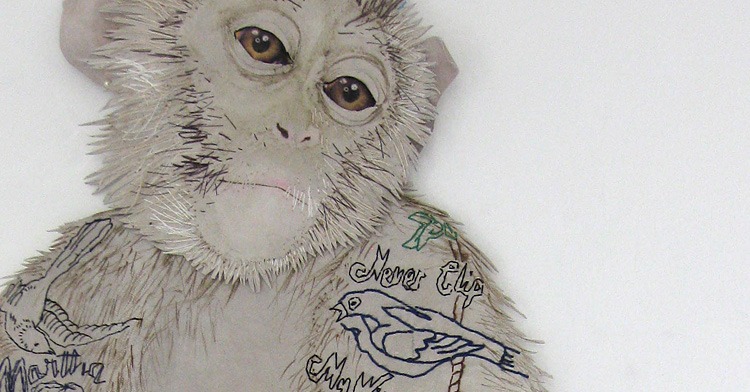
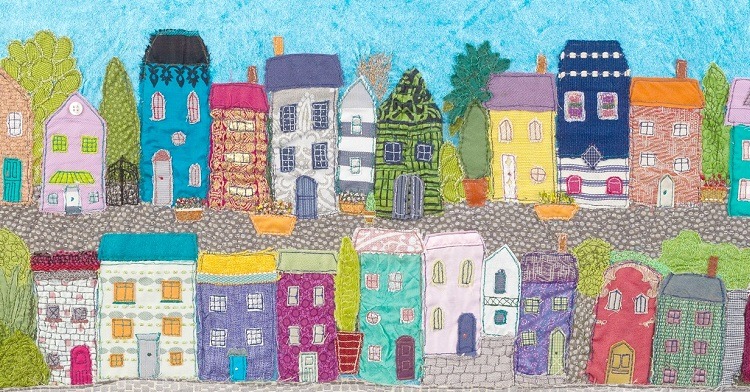
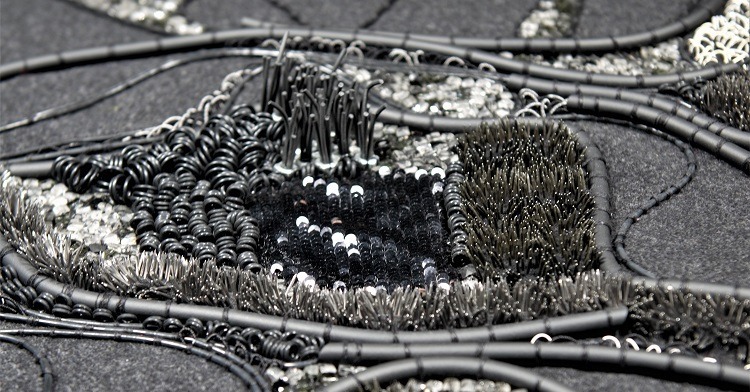
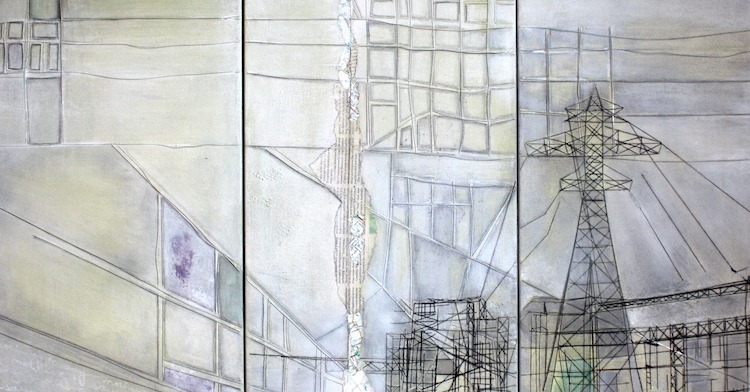
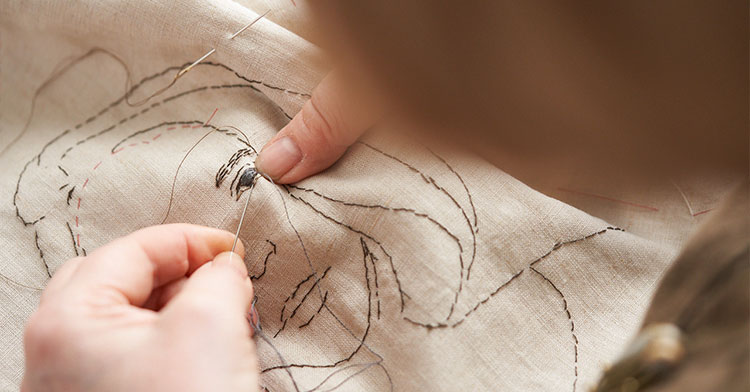
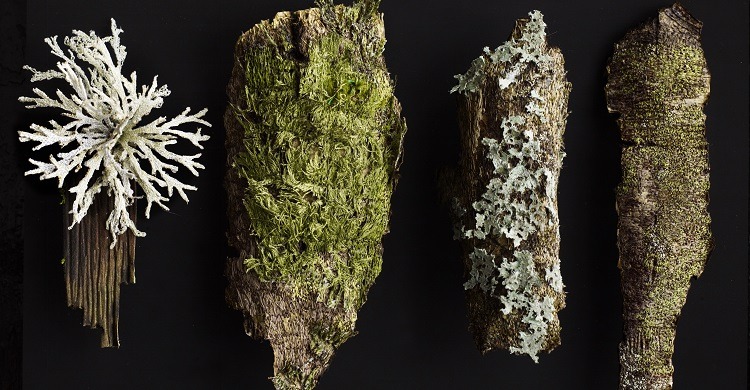
4 comments
Sheralyn
I really enjoyed this article and reading about each persons own personal journey with their work – can we have more please
Angela Consterdine
What a beautiful way to process your grief and create a lasting memory! Very inspirational and emotional work.
Thank you
Melissa Kosar
I love this article so much. I too am working on pieces to remember my family. My first free stitch piece was of my dad and my second of my sister. I sold the one of my sister – it was a wonderful feeling – it was as if the spirit of her was going out into the world!
Cinzia Beley
Loved this article. Very inspiring reading how the different textile artists approached their works. I have also done several memory pieces which I also found to be extremely therapeutic.